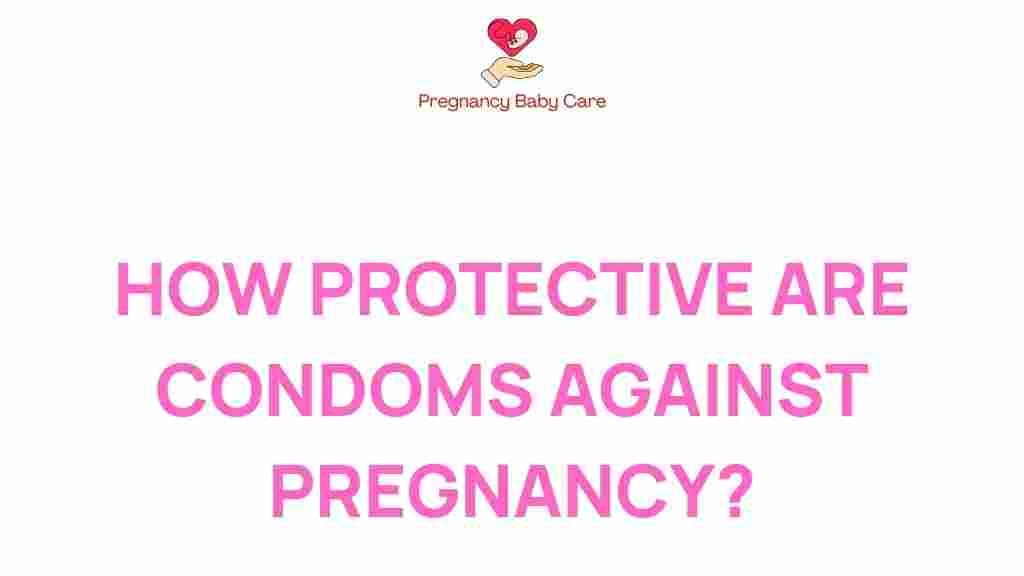Unveiling the Truth: How Protective Are Condoms Against Pregnancy?
When it comes to sexual health, one of the most commonly discussed topics is the use of condoms for pregnancy prevention. Condoms are one of the oldest forms of contraception and have been proven to be effective in reducing the risk of both unintended pregnancies and sexually transmitted diseases (STDs). In this article, we will delve into the effectiveness of condoms as a method of birth control, explore their role in safe sex practices, and provide insights into their use in pregnancy prevention.
Understanding Condoms and Their Effectiveness
Condoms are thin sheaths made from latex, polyurethane, or polyisoprene that are worn over the penis or inserted into the vagina during sexual intercourse. They serve two primary purposes: providing contraception and protecting against STDs.
According to the Centers for Disease Control and Prevention (CDC), proper use of condoms can reduce the risk of pregnancy by about 98%. However, with typical use, which accounts for human error, the effectiveness drops to approximately 85%. Understanding these statistics is crucial for anyone considering condoms as their primary method of birth control.
The Mechanism of Pregnancy Prevention
Condoms work primarily by creating a barrier that prevents sperm from entering the uterus. When used correctly, they prevent sperm from reaching the egg, thereby reducing the chance of fertilization. Here are the key points regarding how condoms effectively prevent pregnancy:
- Barrier Method: Condoms act as a physical barrier, preventing sperm from entering the reproductive tract.
- Prevention of Ovulation: Some types of condoms may be combined with spermicides to further enhance their effectiveness.
- Protection Against STDs: Condoms are the only form of birth control that also provide protection against sexually transmitted infections.
Types of Condoms
There are various types of condoms available on the market, which can affect both their effectiveness and the user experience:
- Latex Condoms: The most common type, they are effective against both pregnancy and STDs but should not be used with oil-based lubricants.
- Polyurethane Condoms: Made from a type of plastic, these are a good alternative for those allergic to latex and are effective for pregnancy prevention.
- Polyisoprene Condoms: Similar to latex but without the allergens, these condoms are also effective against pregnancy and STDs.
- Female Condoms: Worn inside the vagina, these also provide a barrier to sperm and STDs.
Steps for Effective Condom Use
To maximize the effectiveness of condoms in pregnancy prevention, it is essential to use them correctly. Here’s a step-by-step guide:
- Check the Expiration Date: Always ensure that the condom is not expired before use.
- Open Carefully: Tear the wrapper gently to avoid damaging the condom.
- Pinch the Tip: Squeeze the tip of the condom to leave room for semen and roll it down to the base of the penis.
- Use Lubrication: If needed, use water-based or silicone-based lubricants to prevent breakage.
- Withdraw Carefully: After ejaculation, hold the base of the condom while withdrawing to prevent spillage.
- Dispose Properly: Do not flush condoms down the toilet; wrap them in tissue and throw them in the trash.
Common Misconceptions About Condom Use
Many myths surround the use of condoms and their effectiveness. Here are a few common misconceptions:
- Myth 1: “Condoms are 100% effective.”
While they are highly effective when used correctly, there is still a small chance of failure. - Myth 2: “You only need to use a condom sometimes.”
For consistent pregnancy prevention and STD protection, condoms should be used every time you have sex. - Myth 3: “Condoms reduce pleasure.”
Many people find that using condoms can enhance sexual pleasure with the right lubrication and technique.
Troubleshooting Condom Use
Even with proper use, issues may arise that can affect the effectiveness of condoms. Here are some troubleshooting tips:
- Condom Breakage: If a condom breaks, stop immediately and consider emergency contraception if pregnancy is a concern.
- Incorrect Size: Ensure you are using the correct size for comfort and security. A condom that is too tight may break, while one that is too loose may slip off.
- Allergic Reactions: If you experience irritation, consider switching to a different material, such as polyurethane or polyisoprene.
Condoms and STD Protection
In addition to pregnancy prevention, condoms play a crucial role in sexual health by providing protection against STDs. They are effective against:
While condoms significantly reduce the risk of transmission, they do not provide full protection against all STDs, particularly those spread through skin-to-skin contact, such as herpes and HPV. Therefore, regular testing and communication with partners about sexual health are also essential.
Conclusion
In summary, condoms are a highly effective method of pregnancy prevention and play a vital role in maintaining sexual health. When used correctly, they can reduce the risk of unintended pregnancies by up to 98% and offer protection against many STDs. It is critical to understand how to use condoms properly and to dispel any myths that may hinder their effectiveness.
For anyone looking to enhance their sexual health practices and ensure safe sex, understanding the role of condoms in contraception is fundamental. Regular check-ups and open conversations with healthcare providers can further improve sexual health outcomes. Remember, safe sex is not just a choice; it’s an essential part of responsible sexual behavior.
For more information on safe sex practices and contraception, check out this resource.
This article is in the category Health and created by PregnancyBabyCare Team
